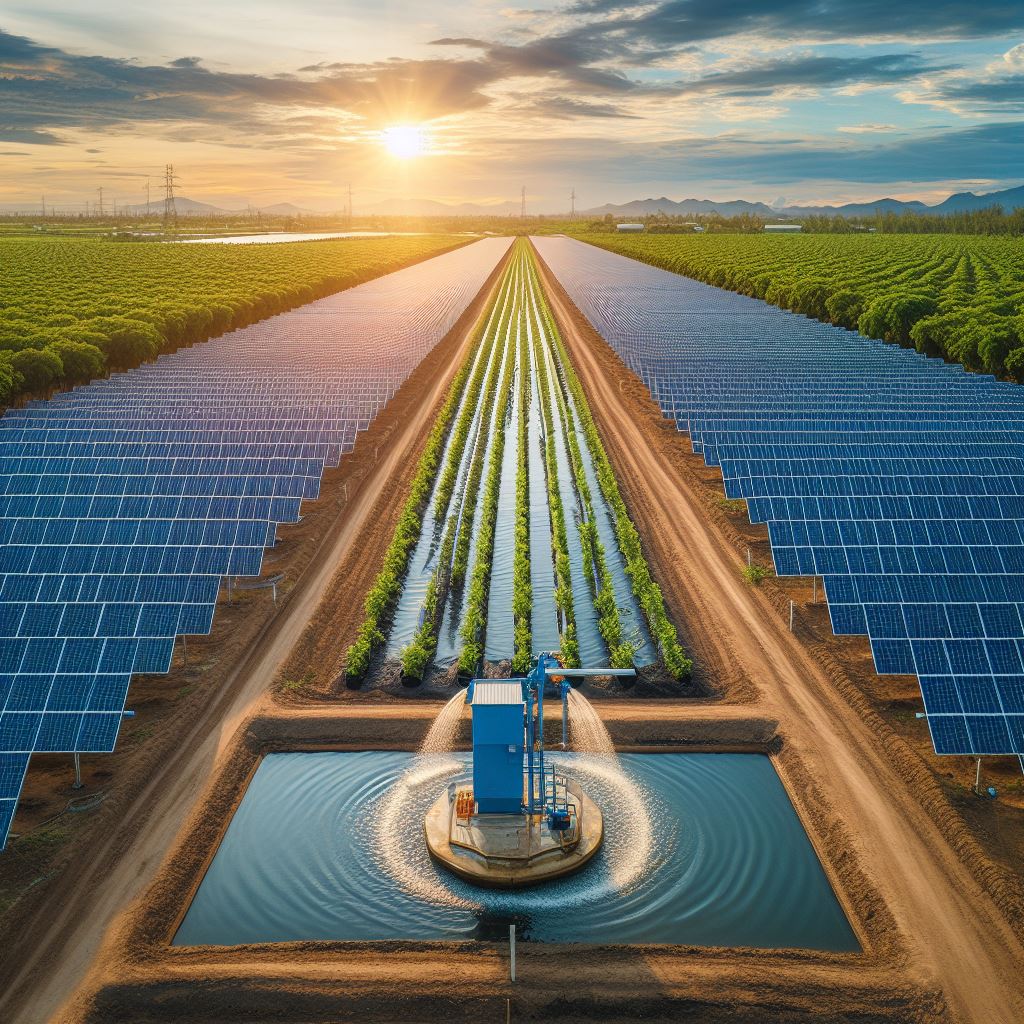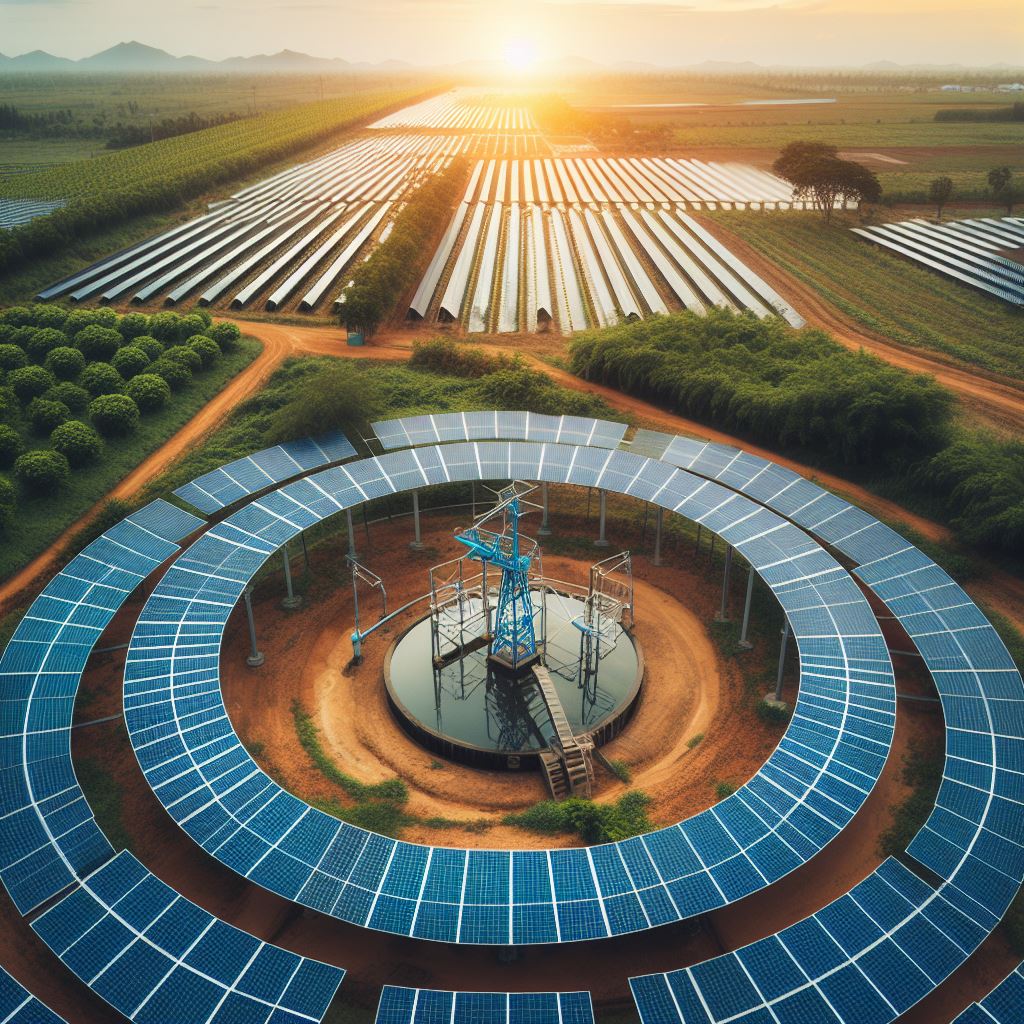Explore the world of solar pump systems in this comprehensive guide. Discover how solar energy can power your water pumping needs efficiently and sustainably. Learn about the benefits, components, installation process, and frequently asked questions about solar pumps.
Introduction:
Discover the revolutionary technology of solar pump systems that harness the power of the sun to provide sustainable water pumping solutions. In this guide, we delve into the world of solar pumps, exploring their benefits, components, installation process, and more. Whether you’re a homeowner, farmer, or environmental enthusiast, solar pumps offer a reliable and eco-friendly way to meet your water pumping needs.
Understanding Solar Pump Systems:
- The Essence of Solar Energy: Delve into the fundamentals of solar energy and its transformation into electrical power to fuel pump systems.
- Evolution of Solar Pump Technology: Trace the development of solar pump systems and understand their evolution into efficient, reliable, and eco-friendly water pumping solutions.

Types of Solar Pumps
Solar pumps come in two main categories:
- Surface Pumps: These pumps reside on the land’s surface, drawing water from wells, ponds, or other sources. They are ideal for applications like irrigation, livestock watering, and filling fountains.
- Submersible Pumps: Designed to operate underwater, submersible pumps are placed directly within the water source, like wells or boreholes. They are suitable for deep water access and applications requiring high-pressure pumping.
Further classification exists within these categories, such as AC or DC-powered pumps and brush or brushless motor types.
Features:
- Solar Water Pump with Energy Efficiency.
- Solar photovoltaic Panels with a service life of a Minimum of 25 Years.
- Automatic controller with dynamic MPPT.
- Inexpensive acquisition, no running costs, and no maintenance
- Environmentally friendly
Technical Specification:
- AC Pump Range: 0.5 hp to 20 hp
- Panels 535 watt
- VFD inverter
- Electrical Wiring & Breakers
- Switch Board
Benefits of Solar Pump Systems:
Economic Empowerment:
Solar pump systems offer significant economic benefits to users, primarily through reduced operational costs. By harnessing solar energy, users can substantially decrease their reliance on traditional electricity sources, thus minimizing electricity bills over time. Additionally, the long-term cost savings associated with solar pumps, including minimal maintenance requirements and no fuel expenses, contribute to improved financial stability for users. These economic advantages are particularly crucial for farmers, small businesses, and rural communities looking to optimize their expenditures while maximizing productivity.
Environmental Impact:
One of the most compelling advantages of solar pump systems is their positive environmental impact. By utilizing renewable solar energy, these systems help reduce greenhouse gas emissions associated with conventional energy sources such as coal or natural gas. As a result, solar pumps play a vital role in mitigating climate change and preserving environmental ecosystems. Moreover, the sustainable nature of solar energy promotes environmental stewardship and fosters a culture of eco-consciousness among users, aligning with global efforts towards a greener, more sustainable future.
Operational Flexibility:
Solar pump systems provide users with unparalleled operational flexibility, particularly in remote or off-grid locations where access to traditional power infrastructure may be limited or costly. By harnessing sunlight, these systems offer a reliable and self-sustaining alternative to grid-dependent pumps, empowering users to access water resources irrespective of their geographical location. This flexibility not only enhances water accessibility for agriculture, livestock, and domestic purposes but also fosters economic development and resilience in underserved communities worldwide.
Sustainability:
Sustainability lies at the core of solar pump systems, reflecting their ability to meet current water pumping needs without compromising the ability of future generations to meet their own. By harnessing the inexhaustible energy of the sun, solar pumps minimize the depletion of finite resources and promote a circular economy mindset. Furthermore, the modular design and scalability of solar pump systems allow for adaptive deployment in diverse environments, ensuring sustainable water management practices across various sectors, including agriculture, aquaculture, and humanitarian aid.
Reliability and Durability:
Solar pump systems are renowned for their reliability and durability, owing to their simple yet robust design and minimal moving parts. Unlike conventional pumps powered by fossil fuels, solar pumps exhibit high resilience in harsh environmental conditions, including extreme temperatures, dust, and humidity. This inherent durability translates into long-term operational stability, reduced downtime, and enhanced productivity for users. Moreover, the low maintenance requirements of solar pump systems further bolster their reliability, making them a preferred choice for remote and challenging operating environments.
Community Benefits:
Beyond individual advantages, solar pump systems offer a myriad of benefits to communities at large. By improving access to clean water for drinking, irrigation, and sanitation purposes, these systems contribute to enhanced public health, food security, and socioeconomic development. Additionally, the adoption of solar pump technology fosters local job creation opportunities, stimulates economic growth, and empowers communities to become self-reliant in water resource management. Ultimately, the collective impact of solar pump deployment transcends individual users, catalyzing positive change and sustainable development on a broader societal scale.

Components of Solar Pump Systems:
Solar Panels: Solar panels, also known as photovoltaic (PV) modules, serve as the primary energy harvesting component in solar pump systems. These panels consist of interconnected solar cells that convert sunlight into direct current (DC) electricity through the photovoltaic effect. Depending on the system’s energy requirements and environmental conditions, various types of solar panels, such as monocrystalline, polycrystalline, or thin-film, may be employed to maximize energy conversion efficiency.
Pump Types: Solar pump systems utilize different types of pumps to extract and transport water from its source to the desired destination. Common pump types include surface pumps, which are suitable for shallow water sources such as ponds or wells, and submersible pumps, which are submerged directly into the water source and are ideal for deep wells or boreholes. Each pump type offers distinct advantages in terms of efficiency, output capacity, and installation flexibility, allowing users to choose the most suitable option based on their specific requirements.
Controller Units: Pump controllers play a crucial role in regulating the operation of solar pump systems, optimizing energy utilization, and ensuring system safety and reliability. These intelligent devices monitor various parameters such as solar irradiance, water flow rate, and battery voltage to dynamically adjust pump speed, flow rate, and power output in response to changing environmental conditions. By maintaining optimal operating parameters, pump controllers maximize energy harvest from solar panels while preventing overloading or damage to the pump system components.
Storage Solutions: Storage tanks or reservoirs are essential components of solar pump systems, providing temporary storage for pumped water and ensuring continuous supply during periods of low sunlight or fluctuating demand. Depending on the application and water usage requirements, storage tanks may vary in size, material, and configuration. Additionally, some solar pump systems may integrate float switches or level sensors to automate the filling and emptying of storage tanks, enhancing system efficiency and user convenience.
Mounting Infrastructure: Mounting structures provide the necessary support and orientation for solar panels, maximizing sunlight exposure and optimizing energy harvest efficiency. Common mounting options include ground-mounted racks, pole mounts, and roof-mounted arrays, each tailored to suit specific site conditions, terrain characteristics, and aesthetic preferences. Proper installation and positioning of mounting structures are essential to minimize shading, maximize solar panel tilt angle, and ensure long-term stability and performance of the solar pump system.
Backup Systems: While solar pump systems inherently rely on sunlight as their primary energy source, backup systems may be integrated to provide supplementary power during periods of low solar irradiance or extended cloud cover. Backup options may include battery storage systems, which store excess solar energy for later use, or diesel or gasoline generators, which serve as emergency power sources when solar energy is unavailable. The choice of a backup system depends on factors such as system autonomy requirements, budget constraints, and environmental considerations.
Installation Process:
- Site Selection and Preparation: The installation process begins with a thorough site assessment to identify suitable locations for solar panel placement, considering factors such as sunlight availability, shading obstructions, and proximity to the water source. Site preparation involves clearing vegetation, leveling the terrain, and ensuring adequate space for solar panel arrays, pump infrastructure, and storage tanks.
- System Design and Sizing: Based on the site assessment and water pumping requirements, a customized solar pump system is designed to meet specific user needs. System design encompasses the selection of appropriate pump type, solar panel configuration, storage capacity, and control strategy to optimize system performance and energy efficiency. Sizing calculations take into account factors such as water demand, daily water usage patterns, peak sunlight hours, and seasonal variations in solar irradiance.
- Component Installation: Once the system design is finalized, the installation process commences with the assembly and installation of individual components, including solar panels, mounting structures, pumps, controllers, storage tanks, and wiring connections. Special attention is paid to proper alignment, orientation, and secure attachment of components to ensure structural integrity, electrical safety, and optimal performance under operational conditions.
- Electrical Wiring and Integration: Electrical wiring and integration play a critical role in connecting solar panels, pumps, controllers, and storage systems to form a functional solar pump system. Careful attention is paid to electrical connections, wire sizing, grounding, and surge protection to minimize energy losses, prevent electrical hazards, and comply with local electrical codes and standards. Integration of control devices and sensors enables automated operation, remote monitoring, and fault detection capabilities, enhancing system reliability and user convenience.
- Testing and Calibration: Following component installation and wiring, the solar pump system undergoes comprehensive testing and calibration procedures to verify functionality, performance, and safety compliance. Functional tests include pump priming, water flow testing, pressure measurement, and controller operation verification to ensure proper system operation under normal operating conditions. Calibration procedures involve fine-tuning control parameters, adjusting pump speed or flow rate settings, and optimizing energy utilization based on real-time monitoring data and user feedback.
- Training and Maintenance: As part of the installation process, end-users receive training on system operation, maintenance procedures, and troubleshooting techniques to ensure proper system management and longevity. Training sessions cover topics such as system startup and shutdown procedures, routine maintenance tasks, safety precautions, and emergency response protocols. Ongoing maintenance activities include periodic inspection of system components, cleaning of solar panels, lubrication of pump bearings, and battery maintenance (if applicable), conducted according to manufacturer recommendations and industry best practices. Regular maintenance ensures optimal system performance, prolongs equipment lifespan, and minimizes downtime, maximizing the return on investment for solar pump system owners.

FAQs
How do solar pumps work, and what are their primary components?
Solar pumps utilize photovoltaic panels to convert sunlight into electricity, powering a submersible or surface pump to extract water from a source and deliver it to a desired location. Key components include solar panels, pumps, controllers, storage tanks, and mounting structures.
What are the typical applications of solar pump systems, and how do they benefit different sectors?
Solar pump systems find applications in agricultural irrigation, livestock watering, residential water supply, pond aeration, and fountain operation, among others. Their benefits include cost-efficiency, environmental friendliness, operational flexibility, and water conservation.
Can solar pump systems operate efficiently in cloudy or rainy conditions?
While solar pumps perform best in sunny conditions, they can still operate efficiently in partially cloudy or rainy weather. Backup batteries or generators may provide power during prolonged periods of low sunlight, ensuring continuous operation.
What factors should be considered when sizing and designing a solar pump system for specific water pumping needs?
Factors to consider include water requirements, available sunlight, system size and capacity, water source depth, pump type, and budget considerations. A thorough site assessment and system design process are essential to ensure optimal performance and efficiency.
Are there any financial incentives or government support programs available for installing solar pump systems?
Many governments offer incentives, tax credits, or rebates for installing renewable energy systems such as solar pumps. These incentives vary by region and may include grants, subsidies, or feed-in tariffs to offset installation costs and promote renewable energy adoption.
What are the maintenance requirements for solar pump systems, and how can users ensure optimal performance and longevity?
Maintenance requirements for solar pump systems include regular inspection of components, cleaning of solar panels, lubrication of pump bearings, and monitoring of system performance. Proper maintenance practices help prevent downtime, extend equipment lifespan, and maximize energy efficiency, ultimately maximizing the return on investment for solar pump system owners.
Conclusion:
Solar pump systems offer a sustainable and efficient solution for water pumping needs, harnessing the power of the sun to provide reliable access to water. With benefits such as cost-efficiency, environmental friendliness, and low maintenance, solar pumps are becoming increasingly popular across various applications. By understanding the components, installation process, and frequently asked questions, you can make an informed decision about incorporating solar pump technology into your water management strategy. Experience the power of solar energy and embrace a greener future with solar pump systems.
